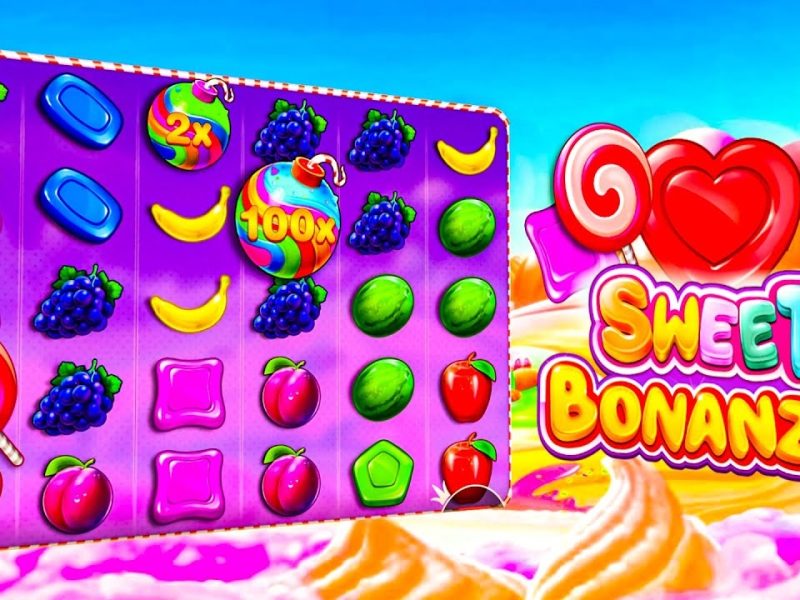Slot RTP Hot refers to slot games that perform better than their stated Return to Player (RTP) percentages. These slots show a statistical return percentage (SRP) higher than the official RTP, indicating they are currently “hot” or paying out more frequently than expected. Understanding which slots are hot can help players make more informed decisions about which games to play.
Players look for hot slots because these machines offer better chances of winning in the short term compared to others with the same RTP statistic. The RTP is a long-term average, but a hot slot means the machine is delivering above this average right now. Tracking real-time data and patterns is essential to identify these hot moments.
Many online tools and community reports provide updates on hot slots by analyzing payout frequency and hit rates. This makes it easier for players to spot opportunities where a slot may temporarily deliver returns better than usual, potentially increasing their chances of winning during that timeframe.
Understanding Slot RTP Hot
Slot RTP Hot refers to online slot games that feature a relatively high Return to Player (RTP) percentage. This section explains what Slot RTP Hot means, how RTP influences game outcomes, and why it is crucial for players to consider RTP when choosing slot games.
What Slot RTP Hot Means
Slot RTP Hot describes slot machines with RTP values generally above the industry average, typically around 96% or higher. RTP represents the percentage of wagered money a slot is programmed to return to players over time. For example, a 96% RTP means that, statistically, a player can expect to win back $960 for every $1,000 wagered.
The term “Hot” indicates that these slots are designed to offer better long-term payouts compared to slots with lower RTPs. However, RTP is not a guarantee of winning in a single session; it is calculated over a large number of spins and player activity. Players looking for more favorable odds often seek out Slot RTP Hot titles to maximize their chances of extended playtime and better returns.
How RTP Affects Slot Outcomes
RTP directly impacts the expected payout rate of a slot machine. A higher RTP reduces the house edge, which is the casino’s built-in advantage, making Slot RTP Hot games statistically more favorable for the player in the long run.
However, RTP alone does not determine short-term results. Variance or volatility also shapes outcomes, describing how often and how much a slot pays out. A high RTP slot can have high volatility, meaning wins might be infrequent but larger. Conversely, a lower volatility slot with high RTP tends to pay smaller, more regular wins.
Players must balance RTP with volatility based on their bankroll and risk tolerance to set effective betting strategies.
Importance of RTP in Slot Games
Understanding RTP is crucial for informed decision-making in slot gaming. RTP offers a measurable metric to evaluate the quality of a slot game regarding fairness and potential returns.
Players using RTP data can manage their bankroll more efficiently by choosing games aligned with their goals, whether aiming for longer sessions or chasing bigger jackpots. Casinos often publicize RTP rates, helping players compare slots.
In summary, RTP helps players understand the likely payout ratio of their wagers, making it a vital factor in selecting online slots.
How to Identify RTP Hot Slots
Identifying RTP hot slots involves understanding the exact RTP percentage, recognizing known titles with high returns, and knowing which software developers tend to produce these slots. This approach helps players target games with better payout potential.
Checking Slot RTP Values
The RTP (Return to Player) percentage shows how much a slot pays back to players over time. To find RTP values, players can check the game’s info section either on online casinos or the slot itself. Many online casinos display RTP in the paytable or game rules.
Using trusted RTP databases is another method. These platforms track RTP percentages across hundreds of slot games and reveal which versions pay the most. RTP values above 96% are often considered good, while RTP above 97% may indicate a hot slot. Practical RTP verification is essential as some casinos offer different RTPs for the same slot title.
Popular RTP Hot Slot Titles
Certain slots have built reputations for consistently high RTPs, making them attractive to players seeking hot games. Titles like Mega Joker (up to 99% RTP) and Jackpot 6000 (around 98.9%) are classic examples.
Modern games like Starburst and Blood Suckers also feature RTPs typically above 96%. Players should monitor active hot slot trackers to find trending titles with temporary RTP boosts or high SRP (statistical return percentage), indicating better payout rates at a given time.
Software Providers for Hot RTP Slots
Some software providers are known for producing slots with competitive RTPs. Microgaming, NetEnt, and Pragmatic Play frequently release games with RTP percentages near or above 96%.
Players looking for hot RTP slots should prioritize games from these developers. Also, smaller providers like Habanero and PG Soft offer niche titles with high RTP potential. Tracking provider releases and updates helps players stay informed about RTP changes and hot slot availability.
Maximizing Returns With Slot RTP Hot
To increase returns when playing slots with high RTP, a player should manage their bankroll carefully and understand the impact of timing and volatility on payouts. Both factors influence how betting strategies can be adjusted to suit the specific slot’s behavior.
Effective Bankroll Strategies
Managing bankroll is essential when targeting slots with high RTP. Players should set a fixed budget for sessions, dividing their bankroll into smaller bets to extend playtime and reduce risk.
Using a flat betting approach—wagering the same amount each spin—helps maintain control and avoid quick losses. Alternatively, adjusting bets based on session results, such as raising bets slightly after wins and lowering them after losses, can help capitalize on hot streaks while protecting the bankroll.
Tracking wins and losses during play is also important. Players should avoid chasing losses by increasing bet sizes too aggressively, as RTP values represent long-term averages rather than guarantees in short sessions.
Timing and Volatility Considerations
Volatility measures how frequently and how much a slot pays out, while RTP indicates expected return over many spins. Choosing games with volatility aligned to the player’s risk tolerance affects how timing can maximize returns.
Low-volatility games offer smaller, more frequent wins, suitable for longer playing sessions and steady bankroll growth. High-volatility slots may pay large jackpots but with less frequency, requiring patience and a larger bankroll buffer.
Players should also consider session length. Longer sessions better realize the RTP value since the payout percentage applies over millions of spins. Short sessions often deviate from expected returns, increasing variance risk.
In practice, balancing session duration with volatility and bankroll size enables more strategic play, increasing the likelihood of benefitting from a slot’s RTP over time.
Comparing Slot RTP Hot With Other Slots
Slot RTP Hot games differ notably from standard slots in payout behavior and statistical returns. These differences affect player experience and potential winnings, making it essential to understand both RTP values and performance metrics in context.
Differences Between High RTP and RTP Hot
High RTP slots typically feature a return to player percentage above 96%, meaning theoretically they pay back that portion of all bets over time. RTP Hot slots, however, are identified by a statistical return percentage (SRP) that exceeds the stated RTP in the game’s rules. This means RTP Hot slots perform better in practice than their baseline RTP suggests.
While high RTP indicates favorable odds over the long term, RTP Hot slots show short-term upward variance with more frequent payouts or higher bonus activity. The key distinction is that RTP Hot focuses on real-time performance, often tracked by players, whereas high RTP is a fixed theoretical value.
Pros and Cons of Playing RTP Hot Slots
Pros:
- Players can experience more frequent or sizable wins through increased SRP.
- RTP Hot slots offer dynamic excitement by outperforming typical RTP expectations.
- They help players identify games currently paying above average.
Cons:
- RTP Hot status can be temporary and fluctuate, making it less predictable.
- These slots may encourage chasing short-term winning streaks, increasing risk.
- Over longer periods, the RTP often regresses to the average stated RTP, limiting sustained advantage.
Players should weigh the benefits of higher short-term returns against the volatility and variability inherent in RTP Hot slots.
Trends and Developments in Slot RTP Hot
Slot RTP Hot games have evolved with technical advances and player-focused features. These changes enhance transparency, gameplay, and customization. Current trends and future outlooks show how RTP Hot slots adapt to player demands and industry shifts.
Recent Innovations in Slot RTP
Developers have integrated real-time RTP tracking, allowing players to monitor return rates dynamically during play. This transparency helps distinguish Hot Slots, which feature higher statistical return percentages (SRP) than stated RTP values.
Another key innovation is the use of adaptive algorithms. These systems adjust gameplay elements based on player behavior, offering customizable bonus frequencies and hit rates. The result is more engaging, personalized sessions that keep players informed of their chances.
Additionally, direct web slots are rising in prominence. They provide more fairness through decentralized frameworks, minimizing tampering risks while ensuring RTP values remain consistent and verifiable.
Future Prospects for RTP Hot Slots
The future of RTP Hot slots likely involves deeper integration of AI to refine payout patterns and risk management. AI could optimize Hot Slot features to balance player retention and payout frequency more precisely.
Blockchain technology may also grow in use, boosting transparency and trust. Immutable records allow players to verify RTP statistics independently, reducing concerns about manipulation.
Finally, emerging mobile platforms will continue to influence RTP Hot trends, demanding efficient, high-performing slots with competitive RTPs tailored for smaller screens and shorter play instances. This focus ensures RTP Hot slots remain attractive in a rapidly evolving market.
Responsible Gaming and RTP Hot Slots
RTP hot slots can influence a player’s session experience, but understanding their role within responsible gaming is crucial. Players must balance the theoretical payout with the inherent variance and apply safe gaming habits to avoid risky behavior.
Setting Realistic Expectations
RTP, or Return to Player, represents a theoretical long-term payout percentage for a slot. For RTP hot slots, the actual return can temporarily exceed the stated RTP, but this does not guarantee consistent wins.
Players should expect fluctuations in short sessions, including dry spells and winning streaks. RTP values are calculated over millions of spins; therefore, outcomes in individual sessions vary significantly.
Believing that RTP hot status ensures frequent big wins is misleading. It’s important to remember that RTP is an average, not a promise, and even high-RTP slots can produce long losing runs.
Safe Practices When Playing RTP Hot Slots
Players should set strict budgets before engaging with RTP hot slots and avoid chasing losses during cold streaks. Using loss limits and session time controls helps maintain control and minimizes financial risk.
Tracking playtime and wagering limits supports healthier gaming habits and avoids impulsive betting. It is advisable to treat RTP hot slots as entertainment, not as guaranteed income sources.
Using features like voluntary breaks and self-exclusion tools can prevent problematic gambling behaviors. Being fully aware of RTP does not eliminate risk; a cautious and informed approach is essential.


